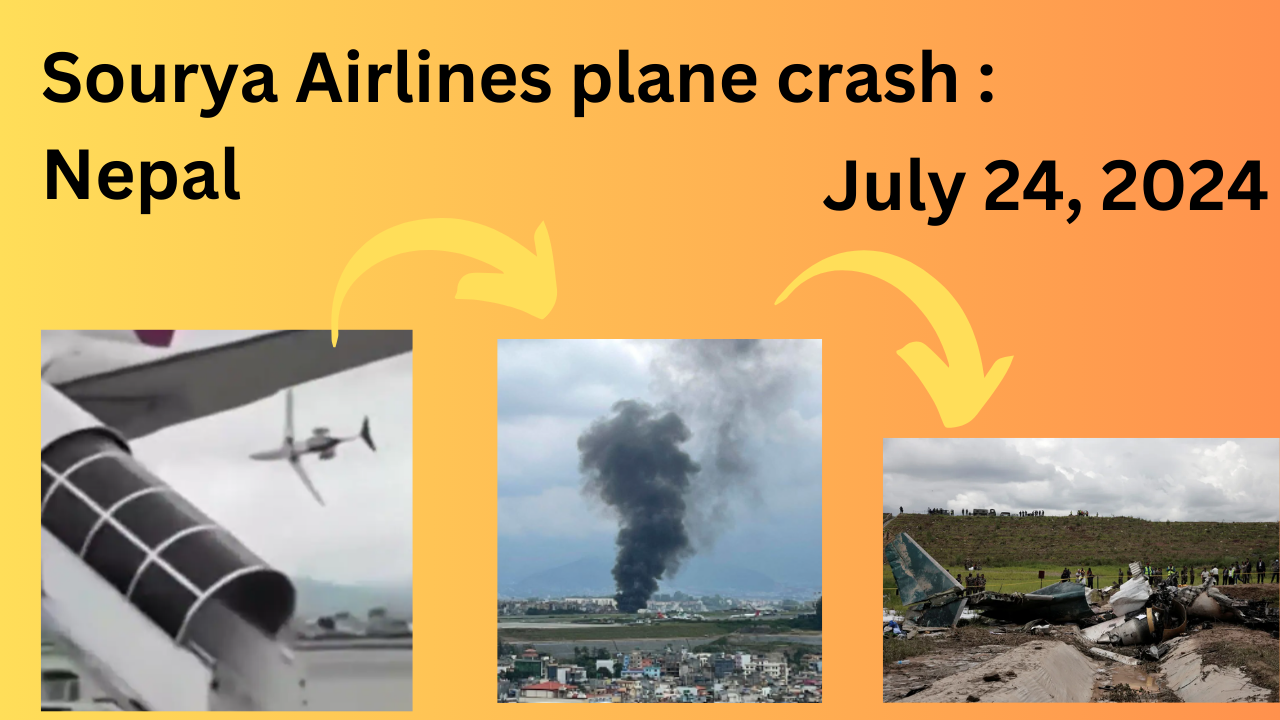The Tragic Incident
On July 24th 2024, Nepal faced another heartbreaking aviation disaster at Tribhuvan International Airport in Kathmandu. The ill-fated flight [insert flight number], operated by Sourya Airlines, crashed during takeoff. The crash resulted in the tragic loss of 18 lives, with the pilot injured. This incident adds to the growing list of aviation tragedies that have plagued Nepal over the years, raising urgent questions about the safety of air travel in the country.
Why Do Planes Frequently Crash in Nepal?
Nepal’s challenging geography, unpredictable weather patterns, and infrastructure limitations contribute significantly to the high incidence of plane crashes. Here are the primary reasons:
- Mountainous Terrain: Nepal’s landscape is dominated by the Himalayas, making it one of the most challenging terrains for aviation. Airports are often located in valleys surrounded by high peaks, leaving little room for error during takeoff and landing.
- Unpredictable Weather: Rapid changes in weather conditions, including sudden fog, strong winds, and heavy rains, can create hazardous flying conditions. Pilots often have to navigate through narrow passes with limited visibility.
- Aging Fleet and Maintenance Issues: Many of the aircraft operating in Nepal are older models with potentially outdated technology. Coupled with maintenance challenges, these factors can increase the risk of technical failures.
- Pilot Training and Experience: While many Nepali pilots are skilled, the complexity of flying in Nepal demands exceptional expertise and continuous training. Instances of inadequate training or lack of experience in handling the unique challenges of Nepali airspace can contribute to accidents.
- Airport Infrastructure: Many airports in Nepal have short runways and limited modern navigation aids. This can complicate landings and takeoffs, especially in adverse weather conditions.
Historical Statistics of Plane Crashes in Nepal
The history of aviation accidents in Nepal is unfortunately long. Here are some key statistics and notable incidents:
- 1962: The first recorded aviation accident in Nepal occurred when a DC-3 operated by Royal Nepal Airlines crashed, killing all 10 passengers and crew on board.
- 1992: Two major crashes within months of each other. In July, a Thai Airways flight crashed near Kathmandu, killing all 113 on board. In September, a Pakistan International Airlines flight crashed, resulting in 167 fatalities.
- 2002: An Agni Air Dornier 228 crashed in the Himalayas, killing all 18 passengers and crew.
- 2012: An Sita Air flight crashed shortly after takeoff from Kathmandu, killing 19 people.
- 2016: A Tara Air flight crashed in the mountainous region of Myagdi, killing all 23 on board.
- 2018: A US-Bangla Airlines flight crashed at Tribhuvan International Airport, resulting in 51 fatalities and 20 injuries.
- 2023: The Yeti Airlines flight crashed in Pokhara, killing all 72 people on board.
These are just a few examples from the long list of air disasters in Nepal. According to the Aviation Safety Network, Nepal has had over 70 recorded aviation accidents since 1949, with more than 700 fatalities.
Conclusion
The latest crash at Tribhuvan International Airport serves as a stark reminder of the inherent risks of air travel in Nepal. While efforts are being made to improve aviation safety, the combination of challenging geography, unpredictable weather, and infrastructure limitations continues to pose significant risks. Addressing these issues requires a multifaceted approach, including modernizing the fleet, enhancing pilot training, and upgrading airport infrastructure to ensure the safety of passengers and crew in the skies over Nepal.



